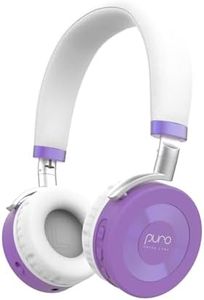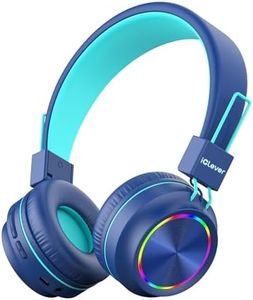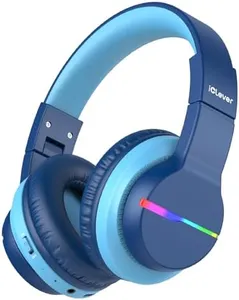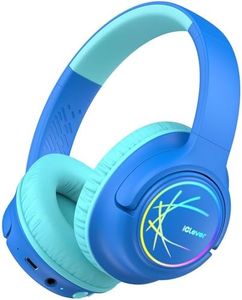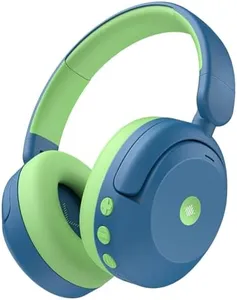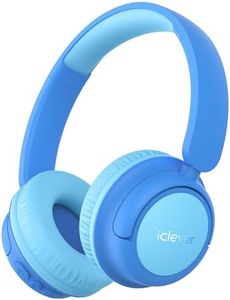We Use CookiesWe use cookies to enhance the security, performance,
functionality and for analytical and promotional activities. By continuing to browse this site you
are agreeing to our privacy policy
10 Best Headphones For Kids
From leading brands and best sellers available on the web.Buying Guide for the Best Headphones For Kids
When shopping for headphones for kids, it’s important to balance safety, comfort, and usability. Children’s headphones need to protect young ears, survive daily use, and be enjoyable for kids to wear. By understanding the most important features, you can make a smart choice that keeps your child safe and happy.Volume LimitingVolume limiting is a key feature in kids’ headphones that restricts how loud the audio can be. This is very important because children's ears are more sensitive to loud noises, and prolonged exposure can cause hearing damage. Most headphones for kids limit sound to 85 decibels or lower, which is considered a safe level for young ears. If you’re choosing headphones for a toddler or a young child, always look for this feature to ensure safe listening.
Fit and ComfortFit and comfort refer to how well the headphones sit on a child’s head and how comfortable they are for long use. Lightweight designs with adjustable headbands and soft ear cushions are ideal. For very young children, look for smaller sizes that will stay secure without squeezing. Older kids might appreciate fuller ear coverage. Ensuring the right fit prevents discomfort or headaches and encourages using the headphones as intended.
DurabilityDurability means how well the headphones can withstand rough handling. Kids can be tough on their belongings, so it's smart to pick headphones made from sturdy materials like flexible plastics and reinforced cables. Some headphones are designed to bend and twist without breaking, and detachable or tangle-free cords can add extra life. This spec is especially important if the headphones will be used at school or on the go.
Wired vs. WirelessThis spec refers to whether the headphones connect via a physical cable (wired) or use Bluetooth (wireless). Wired headphones are simple to use and don’t need charging, but the cords can get tangled or broken. Wireless headphones offer more freedom to move but need charging, and younger kids might need help pairing them to devices. Choose based on your child’s age and how independent they are with electronics.
Size and AdjustabilitySize and adjustability determine if the headphones will fit your child as they grow. Adjustable headbands can extend the life of the headphones by accommodating different head sizes over time. For very young children, it’s best to choose a smaller, snug fit, while older kids may appreciate models that can expand further. This helps balance comfort and practicality.
Parental ControlsSome headphones come with built-in parental controls, which let caregivers set maximum volume, filter audio content, or even limit listening time. This spec is most relevant for very young children or families who want extra peace of mind. Consider whether you need these options based on your child’s age and listening habits.
Appearance and StyleAppearance and style might seem less important, but fun colors, themed designs, or favorite characters can make headphones more appealing to kids, making them more likely to use them as intended. If your child is picky or motivated by visuals, factor this feature into your choice—but always prioritize the safety features above looks.
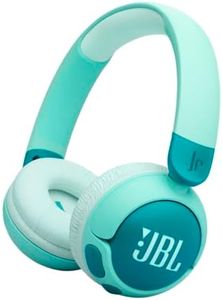


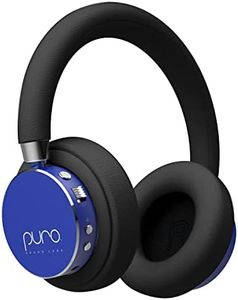
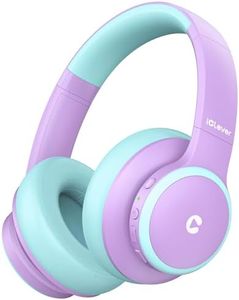
![Belkin SoundForm Mini Kids Wireless Headphones w/Built-in Microphone, USB C Fast Charge, 30H of Playback Time, & Fun Stickers - Over-Ear Headset [Pink]](https://images-proxy.bestreviews.guide/ol6J-r51HdpJ2s_96Oq1ENbUVnU=/0x300/https://m.media-amazon.com/images/I/41UVhnmdRDL._AC_CX679_.jpg)
